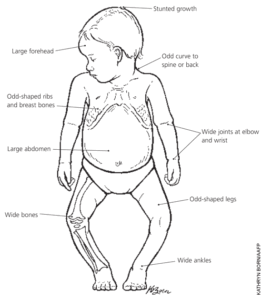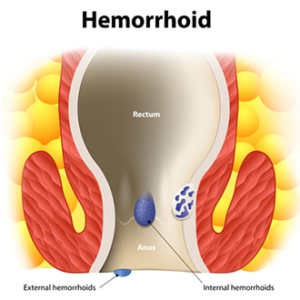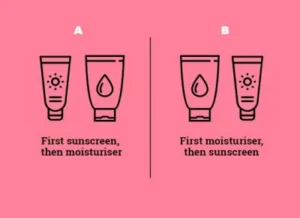Ondine’s Curse Symptoms and Treatment
Understanding Ondine’s Curse: Symptoms, Causes, and Treatment
Read Time: 5 mins
What is Ondine’s Curse?
Ondine’s curse, also known as Congenital Central Hypoventilation Syndrome (CCHS), is a rare and severe form of sleep apnea where an individual stops breathing entirely while asleep. This life-threatening condition is present from birth in its congenital form, but there is also an acquired variety, which can occur due to brain or spinal injuries, or neurodegenerative diseases. Ondine’s curse is characterized by the brainstem’s inability to trigger natural respiratory functions, especially in response to high carbon dioxide and low oxygen levels in the blood, making sleep dangerous for those affected.
The Myth Behind the Name
The term “Ondine’s curse” is derived from a tragic myth of a water nymph who cursed her unfaithful lover to stop breathing whenever he fell asleep. In medical terms, it represents a severe form of sleep apnea, a condition where the body fails to maintain normal respiration during sleep.
Prevalence of Ondine’s Curse
Ondine’s curse is extremely rare, affecting about 1 in 30 million people globally, making it a very uncommon condition. The genetic mutation causing this disorder affects the brain’s control over automatic breathing. While the congenital form is present from birth, the acquired form can result from spinal cord surgery, brainstem tumors, or strokes.
What Causes Ondine’s Curse?
Ondine’s curse is typically caused by a mutation in the PHOX2B gene, which affects the respiratory control center in the brainstem. This gene mutation disrupts the body’s ability to detect oxygen levels in the blood, leading to shallow or absent breathing during sleep. The condition can also be associated with other complications such as Hirschsprung’s disease, neuroblastoma, and eye abnormalities. In some cases, it can run in families, especially in those with milder forms of dysfunction in the autonomic nervous system.
Signs and Symptoms of Ondine’s Curse
Symptoms typically manifest early in life, with some cases even identified in utero. The most common symptoms include shallow breathing during sleep, resulting in low oxygen levels and a buildup of carbon dioxide in the bloodstream. Other signs may include:
-
Cyanosis (a bluish tint) on the hands and feet
-
Seizures
-
Heart abnormalities
-
Cognitive impairments
-
Swallowing difficulties (dysphagia)
-
Gastrointestinal issues such as nausea, vomiting, and pain
Diagnosis of Ondine’s Curse
The diagnosis of CCHS is confirmed through genetic testing, which identifies mutations in the PHOX2B gene. This test is crucial for early diagnosis and management, allowing for timely intervention. In some cases, the disorder is linked to other genetic conditions, requiring a comprehensive genetic evaluation.
Treatment Options for Ondine’s Curse
Managing Ondine’s curse primarily involves ensuring that the individual breathes properly during sleep. The most common treatment is the use of a mechanical ventilator, often connected to a tracheostomy tube, which helps maintain normal respiratory function during sleep. Without such devices, individuals with CCHS can face life-threatening complications during sleep.
Treatment may also include:
-
Reflux management: Medications can help alleviate symptoms of acid reflux, which is common in individuals with CCHS.
-
Gastrointestinal care: Issues such as poor motility may require dietary adjustments and medication.
-
Supportive care: Ongoing support from healthcare professionals, including respiratory therapists, is crucial for managing the condition and making transitions to home care easier for affected families.
The Role of Family and Caregivers
Living with Ondine’s curse can be challenging, but families often become skilled in managing the necessary treatments, including operating ventilators and ensuring proper care during sleep. With support from healthcare professionals, families can effectively manage the condition at home.
Genetic Counseling and Family Planning
For parents who have a child with CCHS, genetic counseling is highly recommended if they plan to have more children. This counseling helps families understand the genetic risks and plan accordingly.
Consulting a Specialist
If you suspect that you or your child may have Ondine’s curse, it is essential to seek expert advice from a pediatric pulmonologist or other specialized doctors. Early intervention is critical for managing the disease and improving quality of life.
Frequently Asked Questions
-
What is Ondine’s Curse? Ondine’s curse is a rare genetic disorder that causes a person to stop breathing while asleep. It is medically known as congenital central hypoventilation syndrome (CCHS).
-
What is Treatment-Emergent Sleep Apnea? Treatment-emergent sleep apnea refers to cases where sleep apnea symptoms emerge or worsen due to treatments such as surgery or medications. In the case of Ondine’s curse, mechanical ventilation is typically required.
Expert Tips for Managing Ondine’s Curse
-
Work closely with a pediatric pulmonologist for specialized care.
-
Stay informed about the latest treatments and technological advancements in ventilators and sleep apnea management.
-
Keep a support network of healthcare providers, family members, and others affected by the condition to navigate challenges together.
Key Takeaways
-
Ondine’s curse is a rare but serious condition that requires careful management, particularly during sleep.
-
Early diagnosis and genetic counseling are crucial for effective treatment.
-
Supportive care from healthcare professionals and family involvement is essential for maintaining the health and well-being of those affected.
Join Our Community
Want more information on Ondine’s curse and other rare conditions? Subscribe to our newsletter for weekly health insights and tips!






